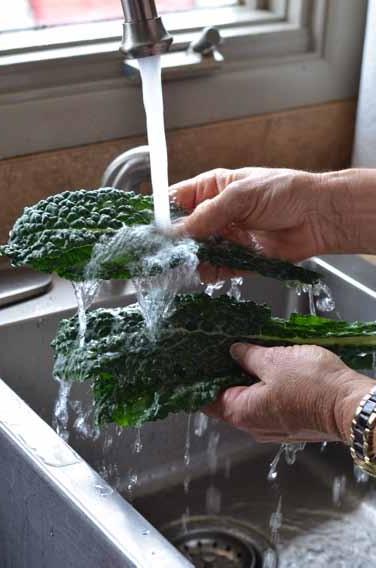
2 minute read
Cooking with kale
Agriculture Magazine, June 2020 - Page 9
Katelyn Andersen, MSU Extension Agent
Advertisement
The summer gardens are coming on with a wide variety of produce. Are you growing and buying kale, the nutrient powerhouse?
Kale is a dark leafy green that has received more and more attention because it is packed with nutrients! According to NationalKaleDay.org, one cup of raw kale contains just 33 calories, provides 134% of your daily vitamin C needs, provides 684% of your
photo Courtesy Katelyn Anderson
daily vitamin K needs, provides 204% of vitamin A, and is an excellent source of calcium and iron. Take that, iceberg lettuce!
Kale can be grown in a home garden, purchases from your favorite farm stand or purchase at the store. For information on growing, harvesting and selecting kale, please reach out to our office for the kale food fact sheet. After purchase, store kale unwashed in a bag in the coolest part of the refrigerator for 3-5 days.
Page 10 - Agriculture Magazine, June 2020
Nutrition Information. Kale is a nutrient packed vegetable, rich in Vitamins A, C, K and B6 and contains significant amounts of potassium, calcium, iron and manganese. It is also a good source of dietary fiber, contains no cholesterol and minimal amounts of calories and sodium. Like other leafy greens, it is rich in phytochemicals which may help prevent cancer and other diseases.
Uses
Wash greens thoroughly before using. Cooked kale reduces in size by 75% compared to fresh greens.
Blanch or Boil. Cover kale with water and bring to a boil. Remove dried or thick stems and place the kale into the boiling water to blanch 5-8 minutes or until desired tenderness.
Braise. Cut kale to desired size. Remove dried or thick stems. Drizzle cooking oil in a heated pan, add seasonings if desired. Cook over low heat for about 20 minutes, or until desired tenderness.
Freeze. After blanching 2-3 minutes or until leaves become soft, freeze in useable quantities to easily add to dishes.
Preserve. For more information on preserving kale, read MontGuides Drying Vegetables and Freezing Vegetables. Visit www.msuextension.org/ nutrition and click on the food preservation link or contact your Extension office.
Roast. Cut kale to desired size. Place on foil-lined baking sheet and drizzle with olive oil and seasoning. Bake at 300°F for 12-15 minutes or until crispy. Salad. Add raw to salads for added flavor, texture and visual appeal. Tenderness can be achieved by massaging finely cut greens with acidic dressing. Add in nuts, seeds or dried fruit for additional flavor and texture. Sauté. Cut kale to desired size. Remove dried or thick stems. Drizzle cooking oil in a heated pan, add seasonings if desired. Cook by stirring over high heat until desired tenderness, about 5-8 minutes. Season. To enhance flavor, experiment with low-sodium seasonings such as basil, bay photo Courtesy Katelyn Anderson leaf, celery seed, garlic, oregano, tarragon or thyme.
Soup or Entrée. Add kale to soups and entrees such as lasagna, quiche, or pizza.
Steam. Remove dried or thick stems. Place kale in a pan with a small amount of water and seasonings. Cook on medium heat for 2-4 minutes, depending on size and age of greens, until desired tenderness.

Katelyn Andersen, M.S., is a Professor for Montana State University. She serves as the 4-H/ Youth Development and Family and Consumer Sciences Extension Agent for Ravalli County. Contact: 406 375-6611 or 215 S. 4th Street Ste G, Hamilton.









